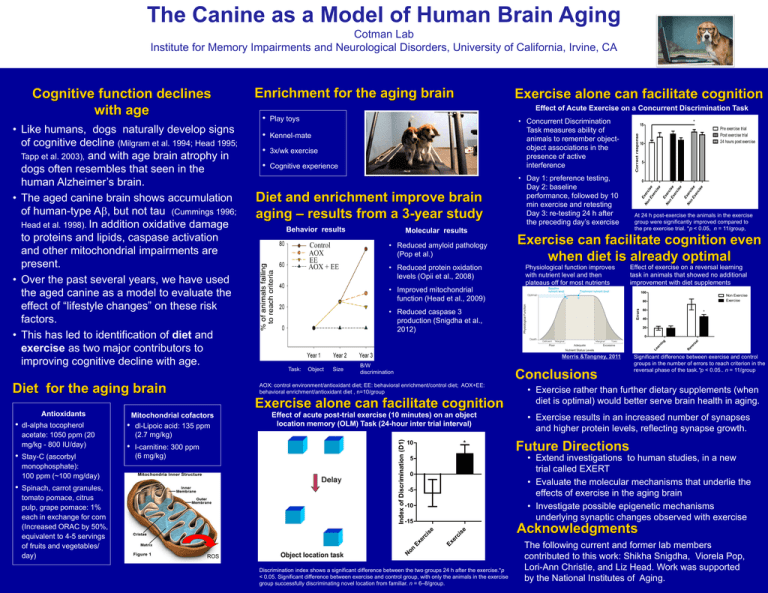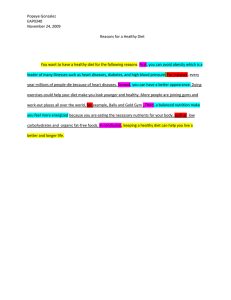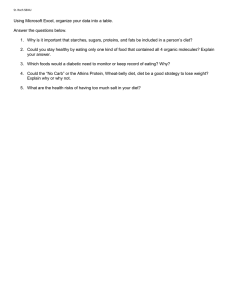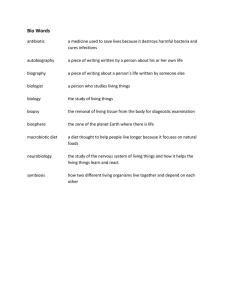Poster 2
advertisement

The Canine as a Model of Human Brain Aging Cotman Lab Institute for Memory Impairments and Neurological Disorders, University of California, Irvine, CA Effect of Acute Exercise on a Concurrent Discrimination Task • • • Concurrent Discrimination Task measures ability of animals to remember objectobject associations in the presence of active interference Kennel-mate 3x/wk exercise Cognitive experience Diet and enrichment improve brain aging – results from a 3-year study Behavior results Molecular results • Reduced amyloid pathology (Pop et al.) • Reduced protein oxidation levels (Opii et al., 2008) Size Effect of acute post-trial exercise (10 minutes) on an object location memory (OLM) Task (24-hour inter trial interval) 10 * Non Exercise Exercise 80 60 * 40 20 rs al ev e R Significant difference between exercise and control groups in the number of errors to reach criterion in the reversal phase of the task.*p < 0.05.. n = 11/group. • Exercise rather than further dietary supplements (when diet is optimal) would better serve brain health in aging. • Exercise results in an increased number of synapses and higher protein levels, reflecting synapse growth. Future Directions • Extend investigations to human studies, in a new trial called EXERT • Evaluate the molecular mechanisms that underlie the effects of exercise in the aging brain • Investigate possible epigenetic mechanisms underlying synaptic changes observed with exercise 5 0 -5 -10 Ex er ci se -15 ci se ROS Effect of exercise on a reversal learning task in animals that showed no additional improvement with diet supplements 100 Conclusions Ex er Spinach, carrot granules, tomato pomace, citrus pulp, grape pomace: 1% each in exchange for corn (Increased ORAC by 50%, equivalent to 4-5 servings of fruits and vegetables/ day) l-carnitine: 300 ppm (6 mg/kg) At 24 h post-exercise the animals in the exercise group were significantly improved compared to the pre exercise trial. *p < 0.05, n = 11/group, Le ar ni ng Object B/W discrimination on • Stay-C (ascorbyl monophosphate): 100 ppm (~100 mg/day) • Physiological function improves with nutrient level and then plateaus off for most nutrients Morris &Tangney, 2011 N • dl-alpha tocopherol acetate: 1050 ppm (20 mg/kg - 800 IU/day) 5 0 Index of Discrimination (D1) • 10 Exercise can facilitate cognition even when diet is already optimal • Reduced caspase 3 production (Snigdha et al., 2012) AOX: control environment/antioxidant diet; EE: behavioral enrichment/control diet; AOX+EE: behavioral enrichment/antioxidant diet , n=10/group Mitochondrial cofactors • dl-Lipoic acid: 135 ppm (2.7 mg/kg) Pre exercise trial Post exercise trial 24 hours post exercise 0 • Improved mitochondrial function (Head et al., 2009) Exercise alone can facilitate cognition Antioxidants • Day 1: preference testing, Day 2: baseline performance, followed by 10 min exercise and retesting Day 3: re-testing 24 h after the preceding day’s exercise * 15 Ex er No c n Ex ise er ci se • Play toys E No xer ci n Ex s e er ci se E No xer c n Ex ise er ci se • Task: Diet for the aging brain Exercise alone can facilitate cognition Correct response • Like humans, dogs naturally develop signs of cognitive decline (Milgram et al. 1994; Head 1995; Tapp et al. 2003), and with age brain atrophy in dogs often resembles that seen in the human Alzheimer’s brain. • The aged canine brain shows accumulation of human-type Aβ, but not tau (Cummings 1996; Head et al. 1998). In addition oxidative damage to proteins and lipids, caspase activation and other mitochondrial impairments are present. • Over the past several years, we have used the aged canine as a model to evaluate the effect of “lifestyle changes” on these risk factors. • This has led to identification of diet and exercise as two major contributors to improving cognitive decline with age. Enrichment for the aging brain Errors Cognitive function declines with age Discrimination index shows a significant difference between the two groups 24 h after the exercise.*p < 0.05. Significant difference between exercise and control group, with only the animals in the exercise group successfully discriminating novel location from familiar. n = 6–8/group. Acknowledgments The following current and former lab members contributed to this work: Shikha Snigdha, Viorela Pop, Lori-Ann Christie, and Liz Head. Work was supported by the National Institutes of Aging.



